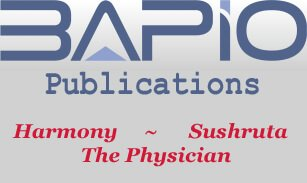FIRMST2020-AB46
SPERMATOGENESIS STIMULATION WITH LOW-LEVEL LASER THERAPY IN MALE SECRETORY INFERTILITY
FIRMST2020-AB46
SPERMATOGENESIS STIMULATION WITH LOW-LEVEL LASER THERAPY IN MALE SECRETORY INFERTILITY
Maria POTAPOVA1, Sergei BOROVETS1, Salman AL-SHUKRI1
Academician I.P. Pavlov First Saint-Petersburg State Medical University of the Ministry of Healthcare of the Russian Federation, Saint-Petersburg, Russian Federation
Aim:
to assess the efficacy of low-level laser therapy (LLLT) in red spectrum on sperm parameters
Keywords: male secretory infertility, spermatozoan stimulation, red spectrum laser
correspondence mashock@mail.ruconflict of interest none
Article InformationDOI:
10.38192/1.6.3.firmst20.ab46Epub: 20.09.2020Presented at FIRMST Conference, Moscow 2020Peer reviewed by JS Bamrah, Ananthakrishnan Raghuraman, Soumit DasguptaOpen Access- Creative Commons Licence CC-BY-ND-4.0
The aim of our study was to assess the efficacy of low-level laser therapy (LLLT) in red spectrum on sperm parameters, sperm DNA fragmentation (SDNAF) and MAR-test in men with secretory infertility.
Patients and methods.
The study included 85 men with secretory infertility; 50 of them (first group) were treated with LLLT and 35 (second group) didn’t have course of LLLT. Average age of patients of the first and second groups was 31.4±1.3 and 32.3±1.4 years.
LLLT was performed in red spectrum on a Rubin-C device (Russia). 10 laser therapy procedures were carried out every two days with active luminescence for 10 minutes of both testicles. Male hormone panel, semen analysis, MAR-test, SDNAF were assessed before and after the treatment. The normative indicator of SDNAF was considered as ≤ 15%, and ≤ 10% was for the MAR test.
The obtained data was statistically analyzed.
Results.
After the course of LLLT in patients of the first group significantly increased: ejaculate volume, sperm viability, number of morphologically normal sperm forms – by an average of 11%, 9% and 23% respectively, and active mobile sperm forms – by an average of 14% and 19% one and two months after the therapy respectively. In 12 patients of the first group with initially increased SDNAF its level became normal after the treatment.
We searched out in patients of the first group significant decrease of MAR-test with its initial level less than 30%. In this group we noticed increase in concentration of total and free testosterone in blood plasma within one month after the LLLT. As a result of the treatment, pregnancies developed in 10 (20%) out of 50 couples.
In the second group of patients there were no any significant changes in sperm parameters and hormone concentration in blood plasma during two months of follow-up; pregnancies didn’t develop.
Conclusions.
1. LLLT in red spectrum leads to significant improvement of sperm quality in patients with idiopathic secretory infertility, that contributes to spontaneous pregnancies in couples.
2. LLLT in red spectrum normalizes sperm DNA-fragmentation level.
3. LLLT in red spectrum decreases MAR-test level, if it was initially less than 30%.
If you are interested in publishing your conference abstracts with us
If you are interested in publishing your conference abstracts with us
Please contac the editorial board for peer review and publication in the The Physician Journal of International Health



